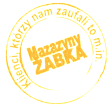Occupational health and safety training
What is worth knowing about health and safety training?
Health and safety training is the first step in any new job. Health and safety is incredibly important whether you work on a construction site, in an office, at school or in a beauty salon. School pupils also go through them. Each of these places has rules that we need to follow for the safety of ourselves and others. Health and safety includes ergonomics, occupational medicine, the economics and psychology of work and, of course, technical safety. The State Labour Inspectorate (PIP) is the guardian of compliance with health and safety regulations.
Health and safety rules apply to employees as well as to the employer, as it is the employer's responsibility to ensure safe and hygienic working conditions. The employer must ensure that his employees are properly protected, as an employee without health and safety training cannot be allowed to work. It is the duty of the employer to provide training. At this point, it is worth knowing that such training always takes place during working time and at the employer's expense.
Who is subject to health and safety training?
All employees, regardless of what type of work they do and whether they are contracted, contracted out or are apprentices.
The courses themselves take different forms. Some require travel, while others take place at home, where we only need access to the internet. Health and safety training also comes in different frequencies. In the case of OHS, we can encounter 4 basic forms of training:
- Instruction - is a form of training that lasts no less than 2 hours and enables us to acquire, update or supplement our knowledge and skills about the work we are doing and how we should behave in accordance with health and safety rules;
- Seminar - a form of training that is not less than 5 lesson hours and has the same purpose as instruction;
- Course - training that is not less than 15 lesson hours and, unlike instruction and seminar, includes theoretical and practical instruction in health and safety principles;
- Self-directed learning - self-directed training based on materials provided by the training provider and possible consultation.
Health and safety courses are divided into initial and periodic courses. So what are the differences and what is worth knowing about them?
Initial training is organised for employees before they are allowed to work. They are designed to provide the employee with the knowledge and skills they will need to do their job well. In such a course, one learns about the hazards that are present in specific positions in the workplace. It is conducted in the form of instruction, according to programmes that have been specifically developed for specific job groups. It includes:
- general instruction, through which participants can learn the basics of health and safety at work, the issues contained in the Labour Code and the rules of the company where they work, as well as the principles of first aid in the event of an emergency.
General instruction is most often carried out by a member of the occupational health and safety services, an employer who performs such tasks himself or a suitably qualified employee designated by the employer;
- job-specific instruction, which ensures that you are familiar with the specifics of the job, what factors and occupational risks are involved in a particular position.
The job briefing is carried out by the employer or his/her designee, if he/she is competent and trained himself/herself, of course.
The initial course should conclude with the completion of an initial safety and health training card and be placed in the employee's file. The card is valid for a maximum of 12 months, but those working in managerial positions, must repeat the training every 6 months.
Periodic training The programme is aimed at employers, managers, foremen, workers, engineering and technical staff (machine designers, technologists, production organisers), occupational health and safety staff and administrative and office staff. The aim is to refresh employees' knowledge, remind them of the health and safety rules in the workplace and familiarise participants with technical and organisational solutions.
The main difference between periodic training and initial training is that, while in the case of initial training, every new employee is obliged to participate, in the case of the former, there are persons who may be exempted from participation. If we submit a current certificate of such training from another employer or we belong to a group of jobs that do not have to participate in periodic training - we are automatically exempt from the obligation to participate in the course. Unlike in the case of initial training, in this case it is the employer who determines the frequency and duration of the training, after consulting the employees, of course.
The periodic training ends with an examination, which is carried out by a commission appointed by the organiser, to check the extent to which the participant has mastered the occupational safety and health material. If he or she passes the examination, he or she will receive a personal certificate of completion of the training. The length of validity of the certificate varies depending on the job. Employees in blue-collar jobs must undergo such training at least every three years, while office and management employees must undergo such training at least every five years.
The curricula of the initial and periodic health and safety course should specify the specific subject matter, forms of delivery and duration of such training for each job group.
Who develops these programmes?
None other than the employer or the organisational unit that provides health and safety training, after prior consultation with the employer.
The lecturers and instructors who take part in training should be chosen carefully. In addition to their knowledge of health and safety topics, they should be didactically prepared so that they can deliver the training with fruitful results.
Health and safety training, depending on our position, can be done online or in closed courses. The advantage of remote training is, without doubt, the home atmosphere and the certainty of receiving a training card. Courses are divided by job position and workplace, and you can also find training in foreign languages, especially the popular English and Ukrainian.

































